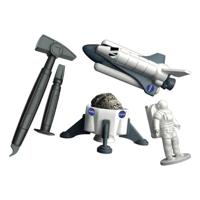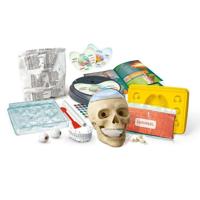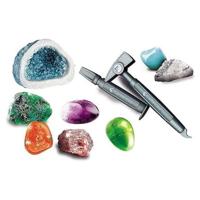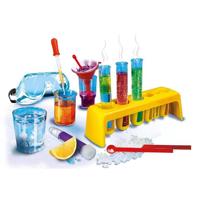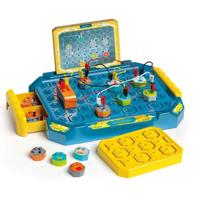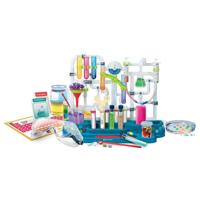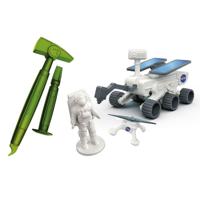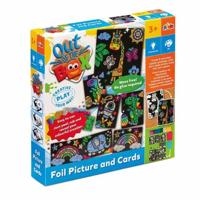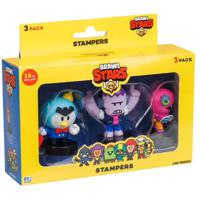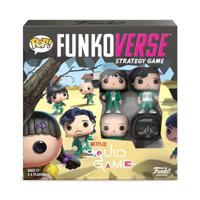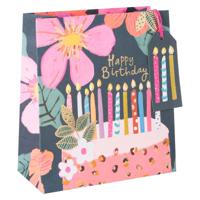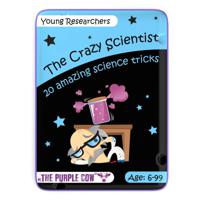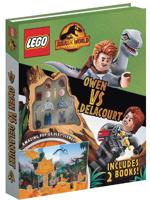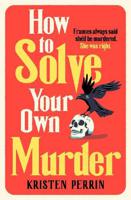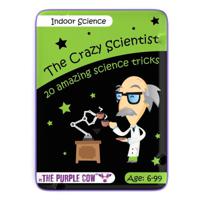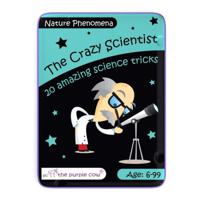39.04
18.53About Experiment Boxes
While it is possible to teach your children the basics of science and technology at a young age with some effort, the better thing to do is to build curiosity in them. That way, they will start learning themselves and your work becomes a lot easier. A science experiment box is a perfect toy to make them more inquisitive about the things around them.
A lot of kids are naturally born with a taste for science. You would have seen a toddler breaking apart his toy to find out what is inside it. But most of them do end up hating science-related subjects when they start schooling. Traditional schooling methods cause them to think that science is too difficult or uninteresting. But if kids get early exposure to it and find out that learning science can be fun as well; it will completely change their attitude to it. Before you go shopping for experiment boxes, knowing more about them is a good idea. This article tells you about different types of experiment boxes and their features.
Different types of experiment boxes for your kids
Shopping for the experiment boxes is tricky! Especially, when you have an array of choices in it. Every brand has different features to offer which attracts you to purchase it for your children. But you need to choose the product according to your children’s interests. Some kits can teach your toddler about the colour theory while others can teach them about mathematics. So, read more about the cheap experiment box of different age groups & make your online shopping fun.
The Thames and Kosmos chemistry set
This is a perfect choice if you want to give your kid a complete chemistry lab experience. It has several test tubes, glassware, chemicals, and a guidebook that explains how to perform the experiments. The guidebooks explain the steps in simple, easy to understand examples with catchy illustrations. But not all Thames and Kosmos experiment boxes are the same. There are kits of varying difficulties. This is a good thing because kids will love more interesting and complex chemistry experiments as they get older. Some of these kits can perform hundreds of experiments.
Magna-Tiles experiment box
Valtech tiles are somewhat like a building block set. But it takes the building activity a step further to include the math and physics skills of the kids. These tiles are translucent and come in triangular and rectangular shapes. Kids can use these two-dimensional translucent tiles to build three-dimensional objects, including houses replete with a backyard and fence, rockets, and whatnot. They can combine the primary colour tiles to make a tile of a different colour. Therefore, for a creative child, the sky is the only limit for doing experiments using Magna-Tiles.
Lego Boost science experiment kit
An innovative product by the famous Lego brand that can kindle your child’s interest in science. This toy is a different take on robotics by the toymakers. The main upside of Lego Boost is that kids of any age can work and build with them. This experiment box that contains more than 800 pieces of Lego blocks can take up the form of five different robots. But just assembling the blocks is not enough. For a robot to work, you have to program it. But that too won’t be too difficult for the kids. These robots can be programmed without much fuss using a smartphone. The programming has different difficulty levels that enable the robots to move in more interesting ways.
Engineering experiment box
Another of those toys is to improve the STEM aptitude in the kids. Engineering experiment box by Thames and Kosmos. This kit can provide hands-on experience in building things by letting them learn how real-life engineers design and implement construction projects. Objects they can build include helicopters, land vehicles, carousels, etc. But that’s just the beginning. As kids unlock their knowledge about engineering, they can go on to build more complex things. Just the guidebook included in this experiment box is 48 pages long. That can give you an idea of how many options this toy has.
Tips on how to buy Experiment Boxes Online
There are so many different types of experiment boxes. All of them have different themes, different complexities and different quality prices. It can be quite confusing when you try to choose one for your child. This is because there are thousands of different models of these boxes on the market. But if you know what to look for, it can become easier. Here are some tips that you can follow when you shop for science experiment kits.
- Consider the safety – Because an experiment box will have a lot of different parts, chemicals, and electronic elements, safety is a major concern. Small parts should not be too small such that kids can swallow them. But it’s okay for the experiment boxes that are intended for older kids to be tiny parts.
- Look for age-appropriate experiment boxes – You have to seriously consider if the box you are going to buy is suitable for your kid’s age. Usually, the manufacturer will mention the age range of the experiment box on the packaging itself. If the box is too complex or too easy for the kids, your gift will be just another useless junk.
- Check on price – The cost of experiment boxes varies quite a lot. You will find really cheap experiment boxes to those that can cost thousands of dirhams. But if you want the best science experiment box, it is going to cost you some money. But, in the end, you have to choose one that won’t break your bank.
- Pick durability – It is important for these expensive toys to be durable as well. That will let your kids try out the experiments many times before they get bored with it. Also, later you can hand it down to their younger siblings as well. Don’t go for those cheap toys that compromise durability and quality to reduce the cost.
Even though a guidebook is enough for the older kids to play with the experiment boxes. But the toddler might need your assistance to get started. But once they figure out how to read the directions, they will be good to do the experiments by themselves. However, you can find all kinds of experiment boxes and all other kinds of toys using our retail search engine . Some of the top picks are anatomy boxes , astronomy boxes , biology boxes , electro-test boxes, and chemistry boxes . Thus, it will let you compare the prices and features of different products and pick the best ones among them.
Question & Answer
Are science experiment kits beneficial to kids?
Science kits do an amazing job of bringing together the fun of playing and the benefits of learning together. There aren’t many other toys that can do this. That’s the main reason why science kits are popular among parents who wish to develop an aptitude for science, technology, engineering, and mathematics in their little ones. There is no better way to do that than to give them a hands-on understanding of the basic theories and equipment that are used in scientific studies and laboratories. That way, kids will learn to love them rather than finding them as boring.
What age is suitable for a science experiments kit?
You will find experiment boxes for kids from 3 years of age and up. But the complexity level of a kit that is meant for a ten-year-old kid is not the same as the one that is meant for a young toddler. Therefore, you have to make sure that the one you are buying is suitable for your kid’s age. For 3-year olds, an experiment kit will include things like magnets, lenses, bubble wands, and things like that. But those for ten-year-olds will focus more on teaching the kids the basics of engineering, chemistry, mathematics etc. But kids younger than three years won’t find these kits interesting.
Is it possible to make a science kit at home?
Surprisingly, the answer is yes, it is possible to make a DIY science hit at your home. You will find plenty of online resources to help you build a simple and basic experiment kit for your kids. But you should not expect them to work as a high-end Lego robotics kit. But if you are on a tight budget or only want basic functionalities, a homemade science kit can be enough. Prepare to spend quite some time on that though. And if you try to scale a DIY science kit to include more features, you will need to buy a lot of components anyway. Therefore, for more complex projects, making a homemade science kit can be difficult.

